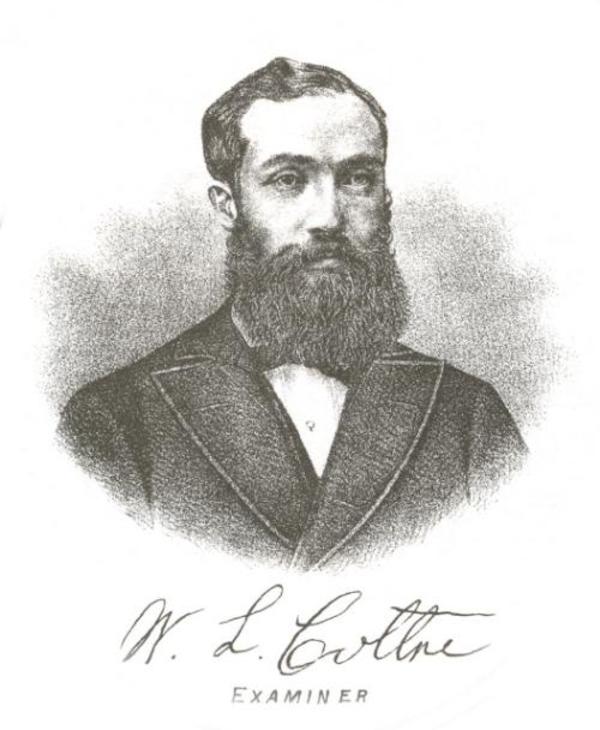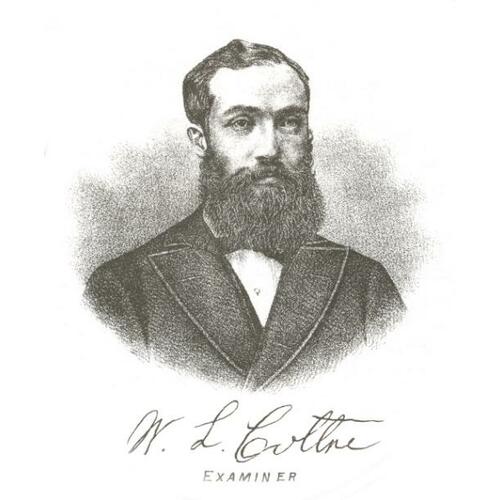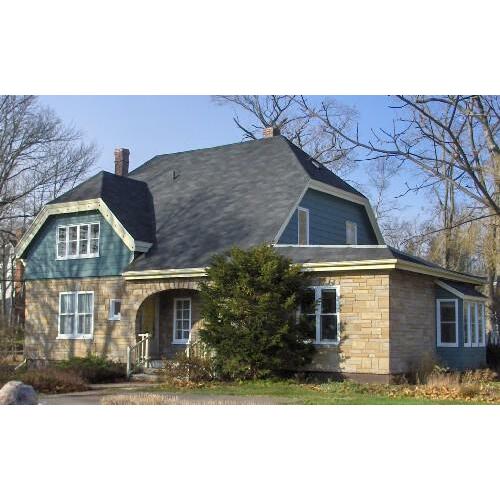
Source: Link
COTTON, WILLIAM LAWSON, newspaperman; b. 23 July 1848 in New London, P.E.I., eldest son of Richard Cotton, a Bible Christian preacher, and Maria Lawson; m. 17 June 1874 Margaret Ellin Harris in Charlottetown, and they had four daughters, one of whom died in infancy, and four sons; d. there 31 March 1928.
William L. Cotton left school in New London at 16 to learn the printing and newspaper business in Charlottetown under the direction of John Ings, editor of the Islander. After two years in Halifax as a reporter for Edmund Mortimer McDonald*’s Halifax Citizen in the early 1870s, he returned to Charlottetown, where in June 1873 he became editor and manager of the Examiner, owned by Jedediah Slason Carvell*. Two years later he bought the paper and in 1877 he turned it into a daily, the first in Prince Edward Island. The move was a bold one, but a spirit of optimism was abroad in Charlottetown, and large homes and new public buildings were under construction. The boom did not last, but the Examiner did, and its main competitor, the Patriot, followed suit in becoming a daily in 1881. At least until 1901 Cotton continued to publish a weekly edition as well. In 1922 the Examiner was absorbed by the Charlottetown Guardian, with which it had been merged in 1915, and Will Cotton retired after having edited it for 49 years. However, he sat on the Guardian’s editorial board, and wrote a column for the paper, mostly essays in Island history that were brought together and republished in 1927 under the title Chapters in our Island story.
He had continued the Examiner’s tradition of support for confederation established by its founder, Edward Whelan*, and just a month after he became editor the Island entered the Canadian union. For four decades the Examiner was the only Conservative paper in Charlottetown, and Cotton himself was a lifelong Conservative, although the Guardian noted when he died that he maintained “a spirit of independence which at times made him restless under party discipline.” He was no reactionary, however, and he wrote early editorials urging free education, land reform, construction of the Prince Edward Island Railway “from Georgetown to Cascumpec,” and installation of an up-to-date water and sewage system in Charlottetown. Around 1880 the standard of coverage and commentary in the paper began to decline, but Cotton continued to take stands from time to time. For example, when it was still an issue of controversy, he urged on his fellow Islanders acceptance of the automobile, which the provincial legislature had banned from the public roads in 1908 in an act that remained in force until 1913, when motor vehicles were allowed to operate on Mondays, Wednesdays, and Thursdays. He also wrote knowledgeably on agricultural matters - a necessity for a newspaper editor in the Garden Province - and his readers were treated to complete descriptions of the people and places he encountered on several trips he made, to the west and to Britain with Margaret Ellin in 1922.
Cotton served for many years as chairman of the trustees of St Peter’s Anglican Cathedral in Charlottetown. These trustees constituted an unusual form of church government that had been designed to protect St Peter’s Anglo-Catholic character when it was made the Anglican cathedral for Prince Edward Island in 1879 by Hibbert Binney*, the bishop of Nova Scotia, who had episcopal jurisdiction over the Island. Cotton’s marriage had been only the second solemnized in St Peter’s after its erection as a chapel of ease for the parish church of St Paul’s in 1869. Cotton also served for many years as secretary and treasurer of the Island’s Children’s Aid Society.
He was an even-tempered, dark-haired man with a bushy beard, married to a wife who set exacting standards of respectability and decorum for her husband and their large family. There was, however, one room in their home that was his sole domain, where Margaret Ellin’s writ did not run. The fact that there was no source of heat in the room made no difference to Cotton, and he used it in winter as well as summer, well bundled up.
Cotton died in 1928 and his wife in 1944. A stained glass window in their memory was subsequently installed in All Souls’ Chapel at St Peter’s Cathedral, the masterpiece created by two of her brothers, architect William Critchlow Harris* and painter Robert Harris*. One of the finest such windows in Prince Edward Island, it was designed by Frederick W. Cole and made by the English firm of William Morris of Westminster (London). Its subject is Christ, who is shown robed and crowned as King, reigning from the cross. Important portraits of the couple by Robert Harris form part of the permanent collection of the Confederation Centre Art Gallery and Museum in Charlottetown, and are often included in the gallery’s exhibitions.
[Family information was graciously supplied to the author by Frederick E. Hyndman of Charlottetown, a great-grandson of Will and Margaret Ellin. r.c.t.]
PARO, P.E.I. Geneal. Soc. coll., family files, Cotton family, contemporary obit. notices and tributes. Charlottetown Guardian, 1922-28. Examiner (Charlottetown), 1875-1922. Canadian annual rev., 1913. The Island family Harris: letters of an immigrant family in British North America, 1856-1866, ed. R. C. Tuck (Charlottetown, 1983). PARO, “Checklist and historical directory of Prince Edward Island newspapers, 1787-1986,” comp. Heather Boylan (Charlottetown, 1987). Deborah Stewart, “The Island meets the auto,” Island Magazine (Charlottetown), no.5 (fall/winter 1978): 9-14.
Cite This Article
Robert Critchlow Tuck, “COTTON, WILLIAM LAWSON,” in Dictionary of Canadian Biography, vol. 15, University of Toronto/Université Laval, 2003–, accessed September 4, 2024, https://www.biographi.ca/en/bio/cotton_william_lawson_15E.html.
The citation above shows the format for footnotes and endnotes according to the Chicago manual of style (16th edition). Information to be used in other citation formats:
| Permalink: | https://www.biographi.ca/en/bio/cotton_william_lawson_15E.html |
| Author of Article: | Robert Critchlow Tuck |
| Title of Article: | COTTON, WILLIAM LAWSON |
| Publication Name: | Dictionary of Canadian Biography, vol. 15 |
| Publisher: | University of Toronto/Université Laval |
| Year of publication: | 2005 |
| Year of revision: | 2005 |
| Access Date: | September 4, 2024 |




